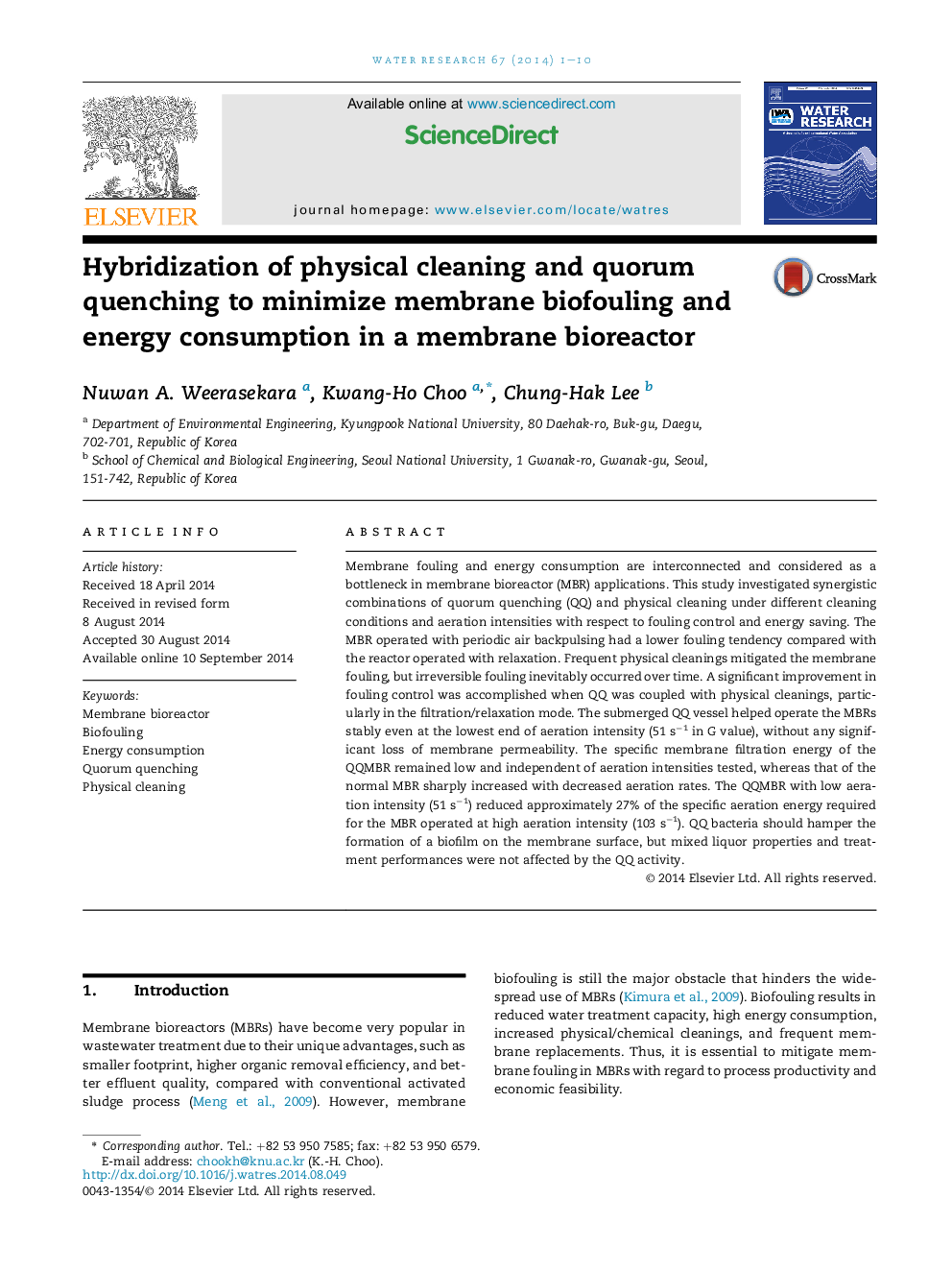| کد مقاله | کد نشریه | سال انتشار | مقاله انگلیسی | نسخه تمام متن |
|---|---|---|---|---|
| 6366578 | 1623101 | 2014 | 10 صفحه PDF | دانلود رایگان |

- Synergistic fouling control via quorum quenching with physical cleaning was investigated.
- Biofouling decreased significantly when quorum quenching was coupled with relaxation.
- Quorum quenching enabled the stable operation of an MBR at the lower extreme in aeration.
- Quorum quenching MBR minimized the energy consumption for filtration and aeration.
- Quorum quenching activity had no influence on microbial flocs and treatment efficiency.
Membrane fouling and energy consumption are interconnected and considered as a bottleneck in membrane bioreactor (MBR) applications. This study investigated synergistic combinations of quorum quenching (QQ) and physical cleaning under different cleaning conditions and aeration intensities with respect to fouling control and energy saving. The MBR operated with periodic air backpulsing had a lower fouling tendency compared with the reactor operated with relaxation. Frequent physical cleanings mitigated the membrane fouling, but irreversible fouling inevitably occurred over time. A significant improvement in fouling control was accomplished when QQ was coupled with physical cleanings, particularly in the filtration/relaxation mode. The submerged QQ vessel helped operate the MBRs stably even at the lowest end of aeration intensity (51Â sâ1 in G value), without any significant loss of membrane permeability. The specific membrane filtration energy of the QQMBR remained low and independent of aeration intensities tested, whereas that of the normal MBR sharply increased with decreased aeration rates. The QQMBR with low aeration intensity (51Â sâ1) reduced approximately 27% of the specific aeration energy required for the MBR operated at high aeration intensity (103Â sâ1). QQ bacteria should hamper the formation of a biofilm on the membrane surface, but mixed liquor properties and treatment performances were not affected by the QQ activity.
162
Journal: Water Research - Volume 67, 15 December 2014, Pages 1-10